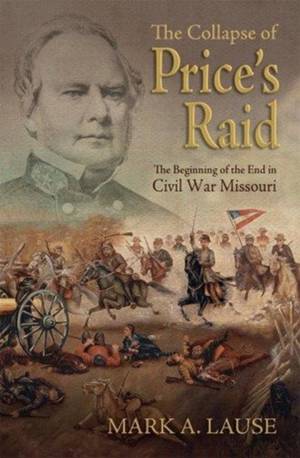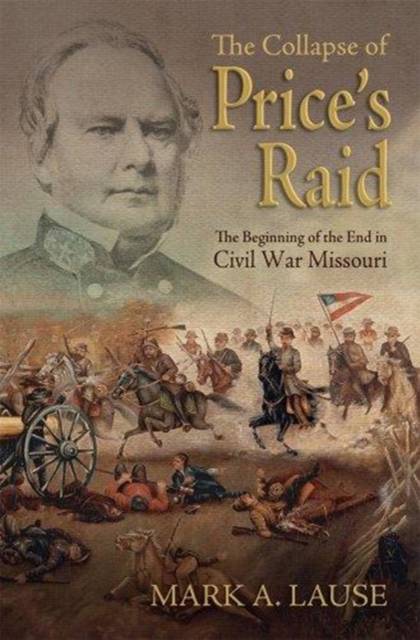
En raison d'une grêve chez bpost, votre commande pourrait être retardée. Vous avez besoin d’un livre rapidement ? Nos magasins vous accueillent à bras ouverts !
- Retrait gratuit dans votre magasin Club
- 7.000.000 titres dans notre catalogue
- Payer en toute sécurité
- Toujours un magasin près de chez vous
En raison de la grêve chez bpost, votre commande pourrait être retardée. Vous avez besoin d’un livre rapidement ? Nos magasins vous accueillent à bras ouverts !
- Retrait gratuit dans votre magasin Club
- 7.000.0000 titres dans notre catalogue
- Payer en toute sécurité
- Toujours un magasin près de chez vous
54,45 €
+ 108 points
Description
As the Civil War was drawing to a close, former Missouri governor Sterling Price led his army on one last desperate campaign to retake his home state for the Confederacy, part of a broader effort to tilt the upcoming 1864 Union elections against Abraham Lincoln and the Republicans. In The Collapse of Price's Raid: The Beginning of the End in Civil War Missouri, Mark A. Lause examines the complex political and social context of what became known as "Price's Raid," the final significant Southern operation west of the Mississippi River.The success of the Confederates would be measured by how long they could avoid returning south to spend a hungry winter among the picked-over fields of southwestern Arkansas and northeastern Texas. As Price moved from Pilot Knob to Boonville, the Raid brutalized and alienated the people it supposedly wished to liberate. With Union cavalry pushing out of Jefferson City, the Confederates took Boonville, Glasgow, and Sedalia in their stride, and fostered a wave of attacks across northern Missouri by guerrillas and organizations of new recruits. With the Missouri River to their north and the ravaged farmlands to their south, Price's men continued west.At Lexington, Confederates began encountering a second Federal army newly raised in Kansas under General Samuel R. Curtis. A running battle from the Little Blue through Independence to the Big Blue marked the first of three days of battle in the area of Kansas City, as the two Federal armies squeezed the Confederate forces between them. Despite a self-congratulatory victory, Union forces failed to capture the very vulnerable army of Price, which escaped down the Kansas line.The follow-up to Price's Lost Campaign: The 1864 Invasion of Missouri, Lause's The Collapse of Price's Raid is a must-have for any reader interested in the Civil War or in Missouri state history.
Spécifications
Parties prenantes
- Auteur(s) :
- Editeur:
Contenu
- Nombre de pages :
- 312
- Langue:
- Anglais
- Collection :
Caractéristiques
- EAN:
- 9780826220257
- Date de parution :
- 26-02-16
- Format:
- Livre relié
- Format numérique:
- Genaaid
- Dimensions :
- 160 mm x 236 mm
- Poids :
- 544 g

Les avis
Nous publions uniquement les avis qui respectent les conditions requises. Consultez nos conditions pour les avis.






